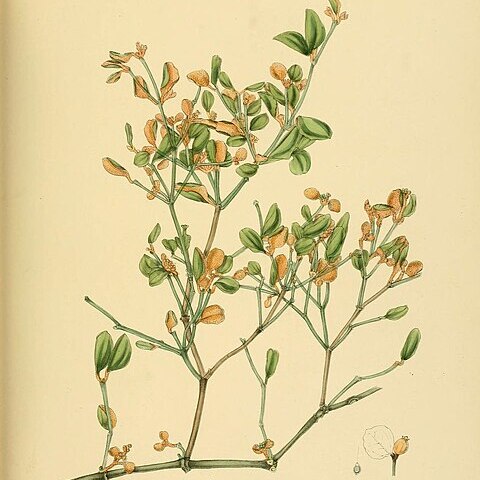Erect or pendulous shrubs, the whole plant or at least young parts with a dense indumentum of dendritic or stellate hairs and/or peltate scales. Stems much-branched, often dichotomous below inflorescences; branches with 1 pair of acute prophylls and 1 pair of acute cataphylls at right angles to them near base. Leaves petiolate, curvinerved. Inflorescence terminal, of 1 or more small fan-like cymes (cymules) each subtended by a pair of narrow acute bracts; cymules solitary or in determinate or indeterminate conflorescences; flowers in each cymule 3-13, developing centrifugally, the central flower(s) male, lateral flowers female. Male flower 4-merous, with an ovoid to reniform anther opposite each tepal on a short filament; anthers many-locular. Female flower 4-merous; ovary cylindrical to barrel-shaped. Fruit mostly ellipsoidal, crowned by the persistent tepals.

